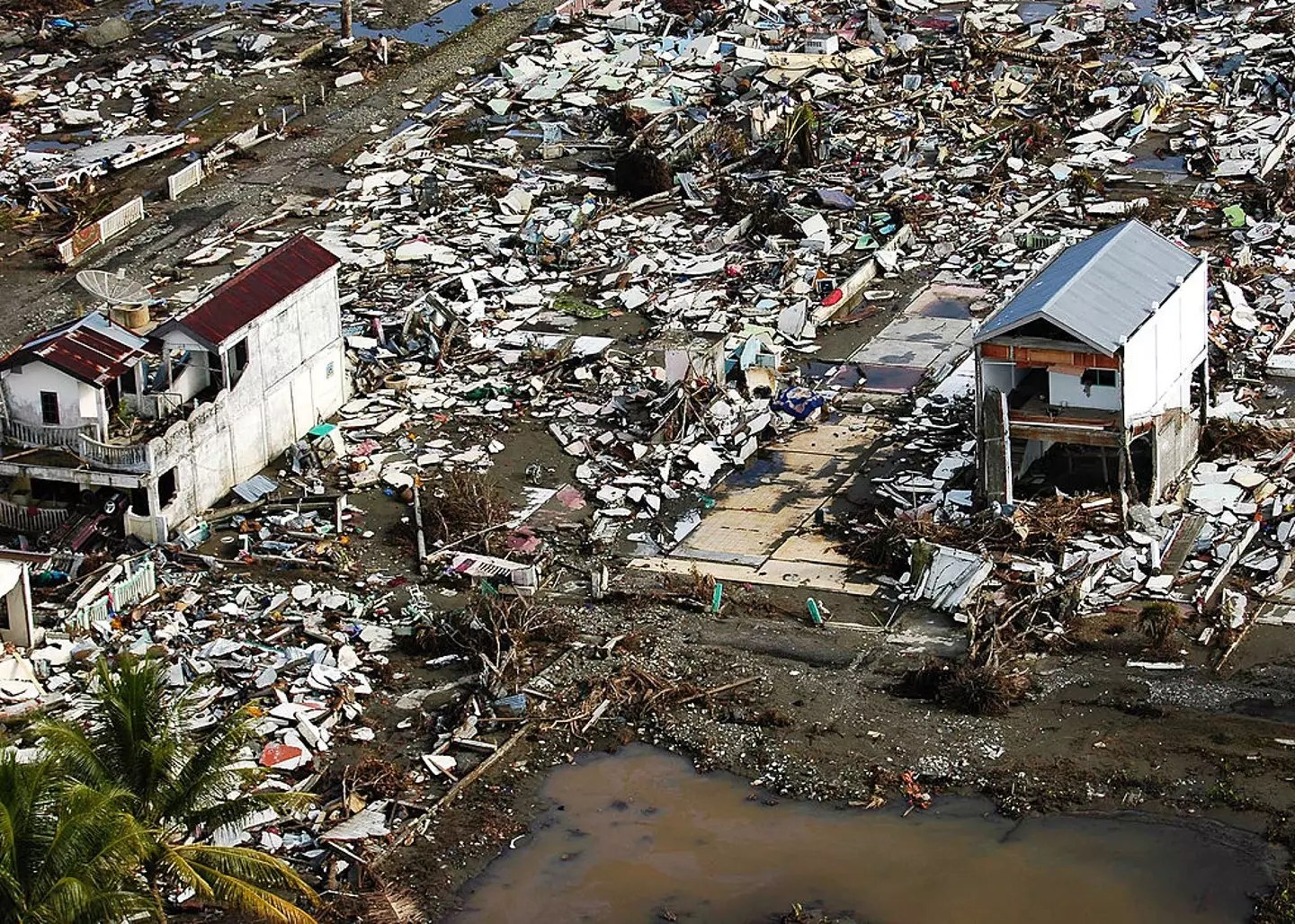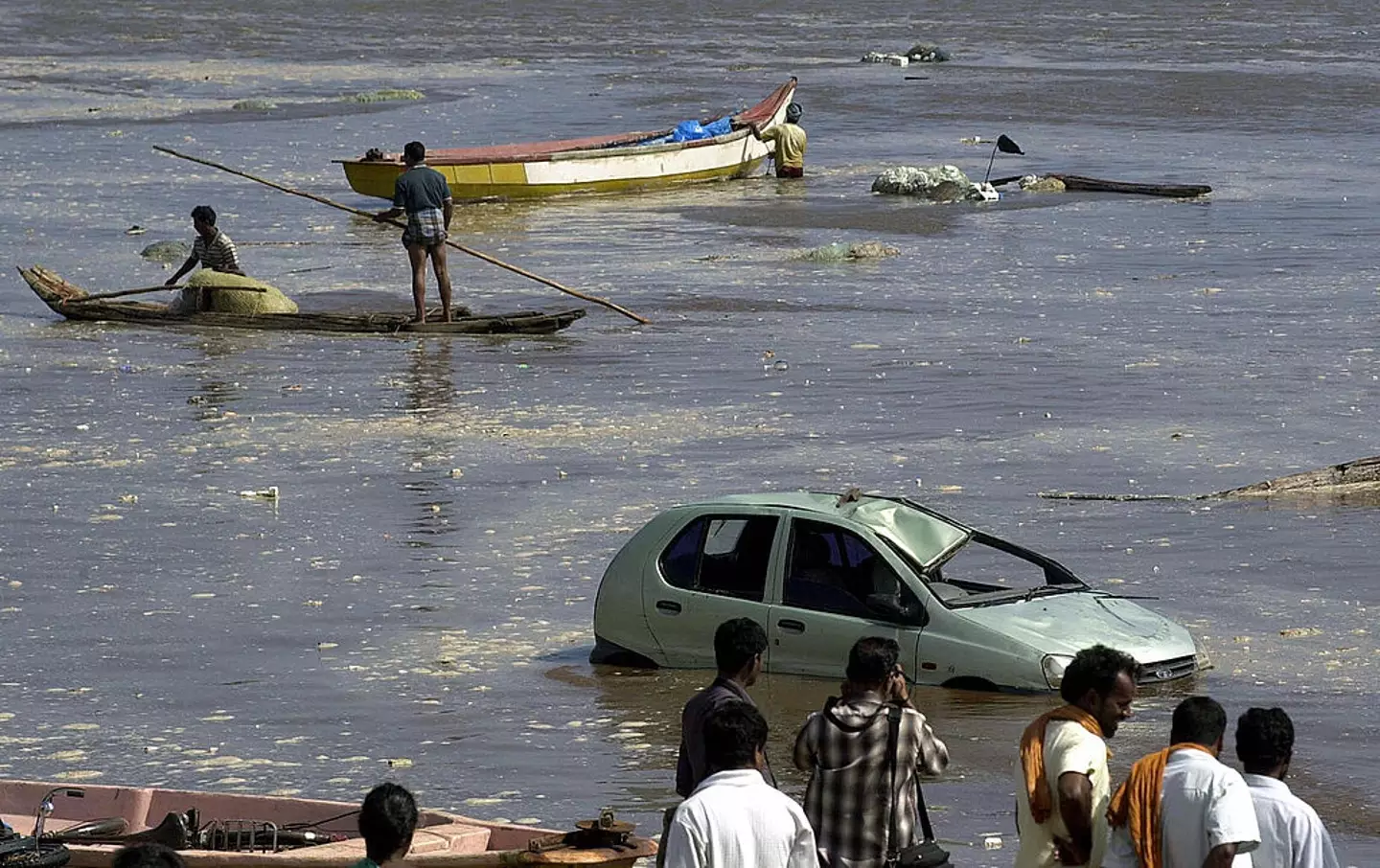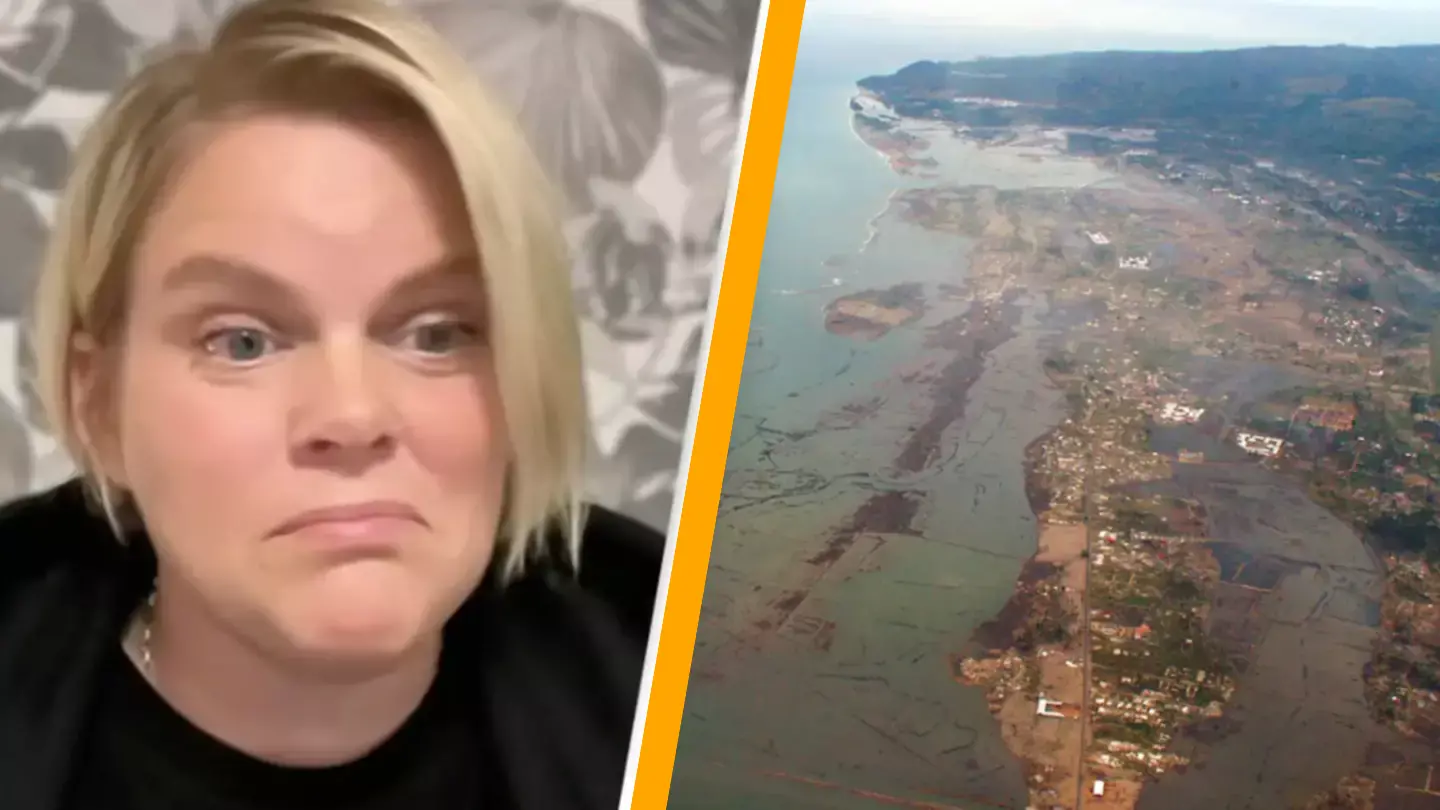A woman who was stranded for hours after a tsunami swept her away has recounted the harrowing experience.
Soffie Modin, aged 45, was holidaying on the Phi Phi Islands in Thailand with her fiancé at the time, named Magnus, his brother, and a friend.
On December 26, 2004, their vacation turned disastrous when a tsunami struck, leading to the loss of thousands of lives.
The group was separated amid the tsunami’s chaos. Before the massive wave struck, Modin remembers hearing an unusual, ominous noise.

“We only heard a sound, like a really loud sound,” she told People. No people screaming, nothing like that, just like a train moving.”
Modin recalls being ‘tumbled around and unable to breathe’ when the tsunami hit, likening the terrifying experience to being inside a washing machine.
For several hours thereafter, Modin found herself alone, trapped inside a house with wire wrapped around her. She lay face down, stomach on the floor, pinned by wooden planks.
“I had nerve damage in my leg because it was like a big woody thing was pressuring into my stomach,” she explains. “So down there at that moment, I thought I would lose my leg totally.”

She recalls hearing cries for help, realizing that people were ‘dying around me’.
Modin was eventually rescued and reunited with Magnus, though tragically, his brother did not survive.
Originally from Sweden, Modin required hospital and home care for eight months following the disaster.
Although Modin and Magnus are no longer together, they remain in contact. She has since remarried and has two children.
Her story of survival was featured in National Geographic’s documentary, Tsunami: Race Against Time.
“Maybe it’s hard [for the younger generation] to understand that it wasn’t so easy,” she reflected.
In a related development, a video emerged showing a man lounging on a Thai beach as the initial waves of a tsunami that killed over 200,000 people in several countries rolled in.
Tsunamis are enormous waves triggered by underwater earthquakes.
The earthquake occurred off the coast of Sumatra, Indonesia.
As it took place underwater, it generated tsunami waves that ravaged nearby countries.
The earthquake registered a 9.1 magnitude, making it the third-largest globally since 1900, occurring 18 miles beneath the ocean’s surface as two tectonic plates collided.
The rupture formed between the Indian and Burma plates extended 800 miles in length.
Nations such as Bangladesh, India, Malaysia, the Maldives, Myanmar, Sri Lanka, and Thailand all reported the earthquake.

